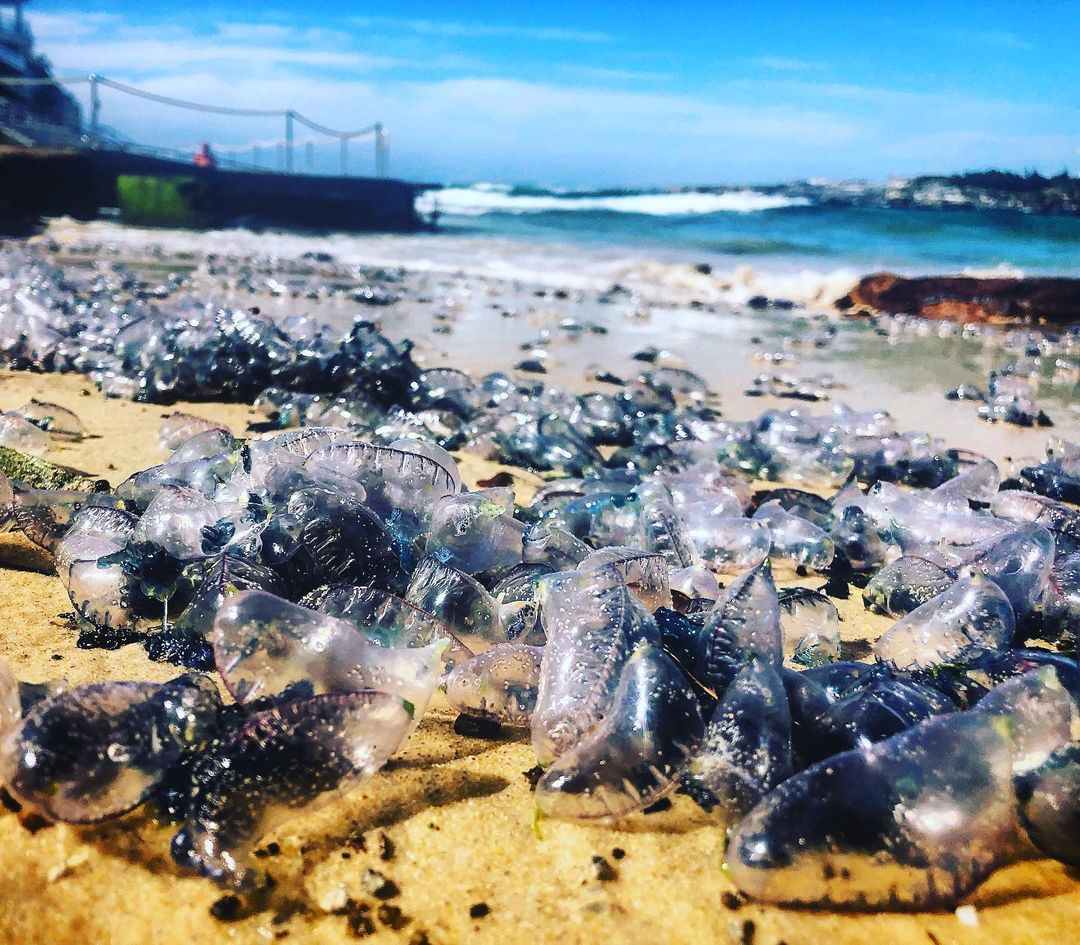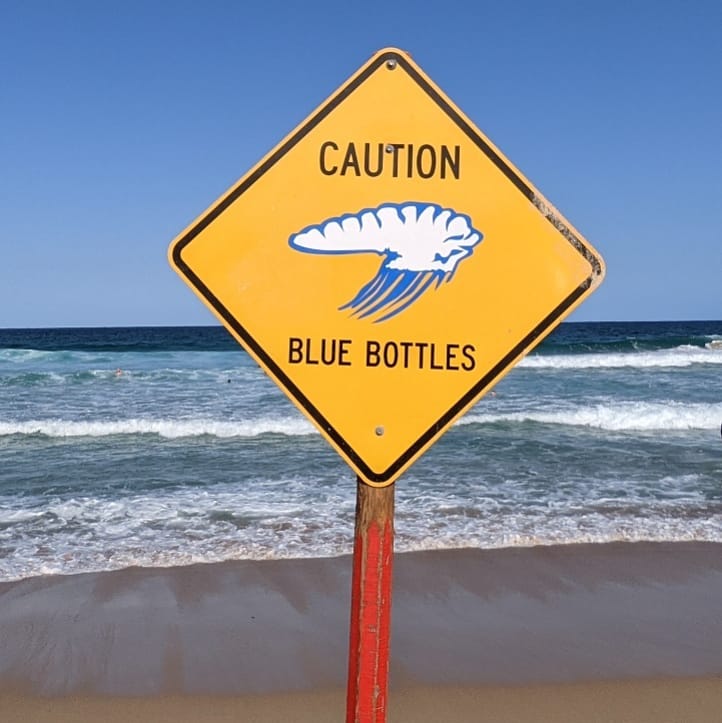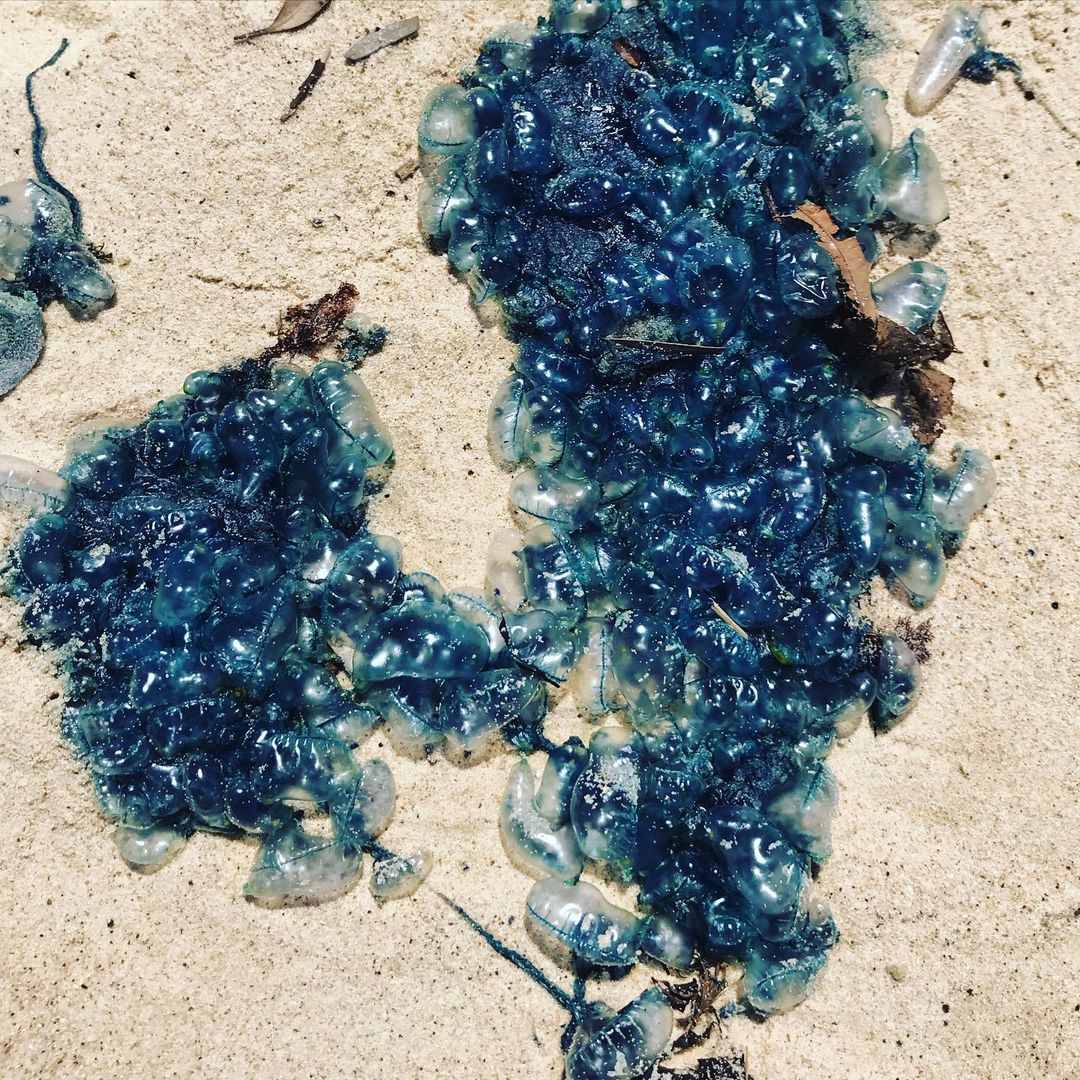Are bluebottles about to return to NSW beaches?
Beaches in Sydney and other parts of NSW were inundated with bluebottles during a period of warm northeasterly winds last week. So, with similar conditions about to redevelop, will bluebottles strike again?
An unusually large bloom of bluebottles washed up in eastern NSW between Wednesday and Saturday last week, following days of warm northeasterly winds over the Tasman Sea.

Image: Nope! Not a sight you want to see at the beach on a hot summer's day. Bondi Beach. Source: @thebondilocal / Instagram
The masses of bluebottles, which are a type of stinging jellyfish, stopped beachgoers in their tracks from Shellharbour up to the Central Coast, including a number of popular Sydney beaches.
But while this particular bout of bluebottles was notable for its size and density, it's not uncommon to see bluebottles on NSW beaches during summer.
"Northeast and easterly winds bring bluebottles to NSW beaches," explains Dr Penny Berents, a Senior Fellow at the Australian Museum Research Institute.

Image: Do you risk it and swim anyway? Maroubra Beach. Source: @solar.tempest / Instagram
Unfortunately, the northeasterly winds that blow bluebottles onto the sand also cause temperatures to rise. As a result, the days when bluebottles are most likely to arrive are also the days when people head to the beaches to cool down.
While westerly and southerly winds have sent the bluebottles away from NSW beaches during the last few days, northeasterly winds are about to redevelop as a high pressure ridge develops over the Tasman Sea.
So, will this bring bluebottles back to the state's beaches?
According to Dr. Berents, the answer is simple: "We don't know."
"Blue bottles may return when the northeasterlies return. [However] we can have day after day of northeasterlies without blue bottles but then suddenly they turn up."

Image: That's a lot of stingers. Coogee Beach. Source: @petal12 / Instagram
In reality, it's not just the wind direction that determines when blue bottles are going to arrive on NSW beaches.
"It is probably a result of the right conditions of temperature and nutrients in the ocean producing a bloom and then the northeasterly blowing them ashore. The life cycle of jellyfish is such that large numbers can be produced quickly," concludes Dr. Berents.